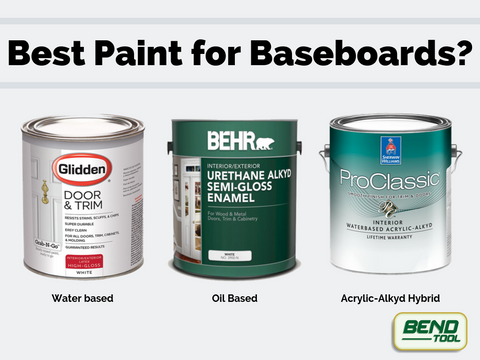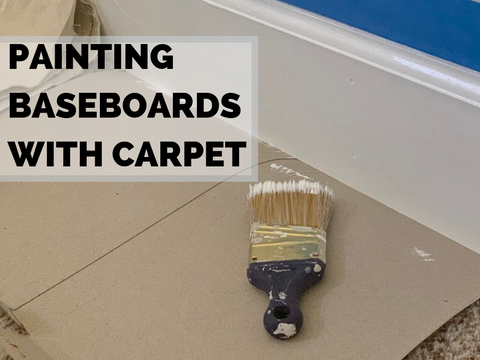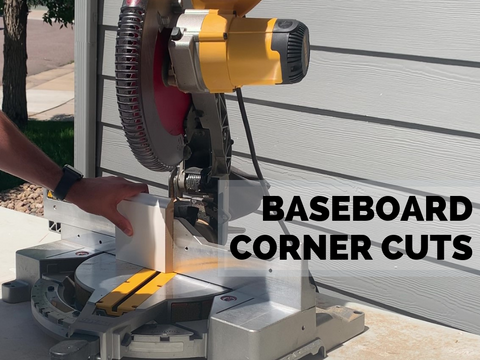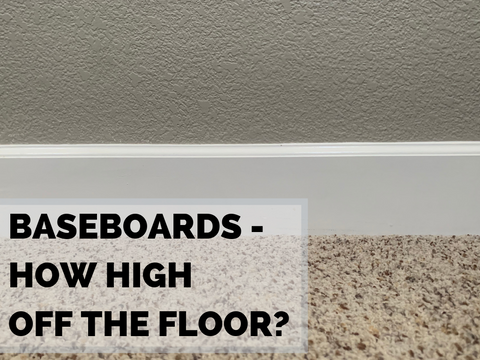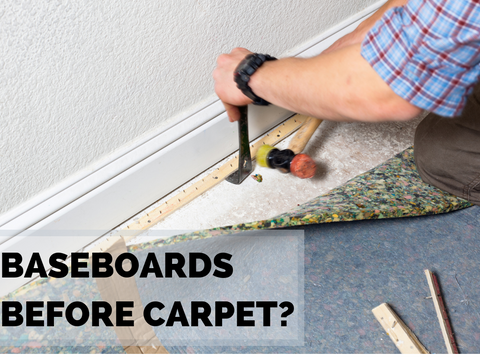
Not all choices are easy when it comes to painting baseboards. Your process can often determine what is best, but not always.
DO YOU PAINT BASEBOARDS OR WALLS FIRST?
Is it better to paint the walls before or after installing baseboard? If you ask around, you will encounter different answers. Most professionals will recommend you paint the walls (and ceilings) before you install baseboards. However, it can be done either way and may vary based on your project.
Other things to consider:
Who is doing the painting? There is a level of skill involved for painting, despite it being one of the easiest (and the most fun?) DIY projects. Who you have help from may determine if you paint trim or walls first. Caulking, taping, and getting the lines right may require the work of a professional – or your best assistant.
Your color combination: Yes, it is more efficient to compartmentalize painting and paint trim and the walls separately. However, it is a good idea to stop and check your work and look at a sample of your finished product from time to time. Try painting a section of the wall or using a fully painted piece of scrap trim.
What type of paint: Oil-based paints let off VOCs known to be harmful to the body, some states restrict their use. If you have children or are sensitive to this, painting baseboards outside might be the best option. We discussed paint brush strokes and oil-based paint before on this blog.
You may be able to skip priming before painting when it comes to baseboards, but you may appreciate the look when adding the extra step. Remember, you will only paint and install your baseboards once, but they will stay on your wall for a very long time.
DO I NEED TO PRIME BASEBOARDS BEFORE PAINTING?
Painted baseboards lead to a nice, clean look, improving the style and feel of any space. Compared to other paint jobs (e.g., walls and ceilings), baseboards are relatively easy to paint. The issue of priming baseboards is often up for debate because they are located near the floor, not at eye level and as easy to see, and at risk for damage, meaning they will need to be repainted anyway. However, the primary drivers for priming are cost and time.
What happens if I don’t prime my baseboards?
In the long term, probably not much.
Benefits of priming:
Even though you can get away without priming in the majority of situations, it is generally recommended to consider it. Benefits include:
- More likely to get the best looking results.
- The paint will look closer to your intended look.
- The layer of paint will be more durable, with the benefits of a primer to stabilize it on the baseboard.
- Helps even out the color and texture of the paint on the baseboard.
Will I save time, not priming my baseboards?
In our experience, including priming in your paint process takes the same amount of time, sometimes less, as it would to only paint your baseboards.
Will I save money, not priming my baseboards?
Assuming you use all your paint, priming can end up cheaper. Primer is less expensive than paint. Using a primer for the first coat or two means you will use less paint.
Priming is part of the process professionals use. However, at the end of the day, the decision to prime your baseboards before painting is up to you, and the results are subjective based on your preference.
DO YOU HAVE TO PAINT PRIMED BASEBOARDS?
The short answer is no; you do not need to paint primed baseboards. You don’t need to paint your baseboards at all. If you primed the baseboards yourself, you may like the look and choose to leave it as is. If the baseboards came primed (all MDF baseboards come primed), you might like the look, but odds are you don’t. Most home centers (e.g., Home Depot, Lowes) do not sell pre-painted baseboards, and you need to plan on adding paint top coats.
Many reasons exist, but here are a few obvious reasons to paint when installing baseboards:


